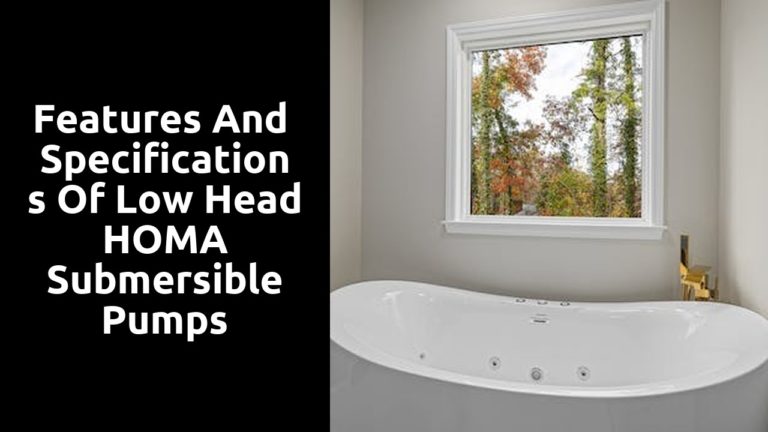LX Lingxiao 1/15 HP 115/230 Volt Circulation Pump
Understanding the Basics of Circulation Pumps
Circulation pumps, a critical component in heating, cooling, and water systems, play an integral role in maintaining consistent operational efficiency. In essence, these mechanical devices help propel fluids through pipes or ductwork. By doing so, they ensure that heat or cold is evenly distributed within the system, whether it be central heating, air conditioning, or a water supply. Hence, they become central to the effective functioning of these systems.
Their design is complex yet elegant, typically having a pump housing that contains an electric motor that powers an impeller. This rotating element creates the necessary force or pressure to move the liquid. Though primarily associated with heating and cooling tasks, circulation pumps are not limited to these functions alone. Their applications traverse across fields and industries, helping move fluids of various consistencies and temperatures in an environmentally efficient manner. Yet, despite their seeming complexity, the basic operations and mechanics of circulation pumps remain refreshingly simple and easy to comprehend.
Exploring High Voltage Circulation Pumps
High voltage circulation pumps are an integral part of several systems in industries such as heating and cooling. Their main function is to facilitate the transfer of heat from one part of the system to the other by circulating a fluid. This is typically achieved through a process known as forced convection. The high voltage in these devices signifies their capacity to handle larger and more complex systems, making them an essential feature in numerous industrial applications.
In terms of design, these pumps often come with sturdy, corrosion-resistant casing and advanced motor technology to handle the high voltage loads. The motors are specifically designed to work under high voltage conditions, maintaining optimum performance while ensuring prolonged service life. The mechanical seals of high voltage circulation pumps are robust and durable to provide a faultless seal against high pressure, thus preventing leakage of the circulating fluid.
The Role of 1/15 Horsepower in Circulation Pumps
Horsepower refers to the amount of work an engine or motor can produce. For circulation pumps, the 1/15 Horsepower rating signifies its power ability to manage fluid flow within a system. Such pumps are relatively smaller in comparison to their higher horsepower counterparts, and they are more commonly deployed in residential buildings or small commercial settings. It’s an understandable choice, as their efficacy in promoting the optimal flow of fluid, whether for central heating or water recirculation purposes, meets the needs of such environments ideally.
The primary attribute of the 1/15 Horsepower pumps lies in their energy efficiency. Due to a lower horsepower rating, these pumps consume less power and produce less heat, thereby preventing waste and reducing maintenance costs. Moreover, they are known for their quiet operation, making them incredibly suitable for setups where noise levels must be maintained at a minimal level. Briefly, with the right setup and design, a 1/15 Horsepower circulation pump capably furnishes a balance between performance, efficiency, and noise control.
The Benefits of 115/230 Volt Circulation Pumps
115/230 Volt circulation pumps are known for their efficiency and flexibility. These pumps are capable of operating at two distinct voltage levels, allowing the user to increase or decrease the power supply as per the requirements. This dual voltage feature enhances the versatility of the pump, facilitating its use in diverse settings. It provides substantial energy savings, as the user can lower the voltage during non-peak hours or when the demand for water flow is minimal.
Moreover, 115/230 Volt circulation pumps offer impressive power and durability. They are essential for applications that require high output and sustained performance like HVAC systems, hot water recirculation, and industrial processes. These pumps are specifically designed to withstand the pressure of heavy duty operations, and their high voltage capability ensures consistent peak performance. These benefits make them a practical choice for both residential and industrial purposes.
Examining the Features of High-Performance Circulation Pumps
High-performance circulation pumps operate with distinctive features that make them stand out in the heating and circulation industry. They are designed to function exceptionally well in high-pressure systems without compromising their overall performance. A key characteristic is the compact design that these pumps possess. Despite the small and sleek design, these pumps can handle high-capacity fluid circulation, showing their high efficiency and durability.
One of the most important features of high-performance circulation pumps is their motor power. These pumps offer 1/15 horsepower, which is quite substantial in comparison to ordinary pumps. This high horsepower output enables these pumps to work in bigger buildings and larger systems. Furthermore, these pumps can operate on 115/230 volts. Such high voltage allows the pump to deliver water efficiently across high-rise buildings or facilities without breaking a sweat. Therefore, when it comes to demanding tasks, high-performance circulation pumps are the way to go.
How to Choose the Right Circulation Pump for Your Needs
Selecting the correct circulation pump involves consideration of several key parameters. The foremost aspect to be evaluated is the capability of the pump in terms of voltage and horsepower. This requires understanding the power needs of your residential or commercial space. For instance, a 1/15 horsepower pump may prove satisfactory for a small home. However, for larger setups or industrial applications, a high voltage circulation pump with a specification of 115/230 volt may be required.
The nature of the task intended for the pump is also a crucial determinant. For high-intensity operations or substantial workloads, a high-performance circulation pump would be more suitable. Additionally, other features such as pump material, energy efficiency, noise levels, and suitability for the specific fluid to be circulated also become considerable factors. It’s essential to strike a balance between pump performance and the required investment. Therefore, proper research and expert advice are vital in this selection process.
• The first step in selecting the right circulation pump is to evaluate its capability in terms of voltage and horsepower. This requires a clear understanding of your power needs, whether it’s for residential or commercial use.
• For small homes, a pump with lower specifications such as a 1/15 horsepower may suffice.
• Larger setups or industrial applications might necessitate the need for high-voltage circulation pumps with specifications around 115/230 volt.
• The nature and intensity of tasks that you intend to perform using the pump also play an important role in determining which type would be most suitable.
• High-intensity operations or substantial workloads generally require high-performance circulation pumps.
• Other factors such as material, energy efficiency, noise levels and suitability for specific fluids should also be considered when choosing your pump.
• Material: Some materials are more durable than others; hence they last longer.
• Energy Efficiency: An energy-efficient pump will save on electricity costs over time.
• Noise Levels: If the pump is intended for home use, then quieter models are preferred.
• Fluid Suitability: Not all pumps can handle all types of fluids. Therefore it’s necessary to check if the chosen model is suitable for circulating your specific fluid.
• Striking a balance between performance and investment is essential while making this decision.
• While higher-performing models might seem attractive initially due to their superior functionality, they often come at a higher cost both upfront and in terms of maintenance expenses down the line.
• On the other hand, cheaper models may not deliver optimal performance but could prove more economical over time depending on usage patterns.
Therefore proper research – including reading product reviews online – along with expert advice from professionals who understand your unique requirements can significantly help improve your chances of making an informed choice about which circulation pump best suits your needs.
The Installation Process of a High Voltage Circulation Pump
The installation process of a high voltage circulation pump can be a considerable task and yet, with proper guidance and safety measures, it becomes manageable for technical personnel. One of the crucial steps includes securing the pump to a solid base using anchor bolts. This is to prevent vibrations that could potentially damage the structural integrity of the pump or the system it integrates with. It is imperative to inspect the pump and ensure it is free from dust or contaminants that could compromise its operation. The voltage should be appropriately set to match the pump’s specifications to avoid electrical faults.
Another significant step involves correctly aligning the piping network with the pump. Misalignment could lead to unforeseen leaks and reduction in pump efficiency. Following the pump manufacturer’s instructions is pivotal in this regard. The electrical wiring and circuits should be carefully set up considering the high voltage nature of the pump, adherence to electrical safety guidelines, and compliance with local/regional electrical codes cannot be overstressed. After completing the installation, a thorough check must be done to guarantee its readiness for operation. By following these steps, the high voltage pump can be efficiently installed, all set to perform its function of enhancing circulation in the system.
Maintenance Tips for Keeping Your Circulation Pump in Top Condition
Consistent care and inspection of your circulation pump can enhance its lifespan and ensure that it operates at peak efficiency. It’s vital to keenly observe any changes in the pump’s performance or unusual noises that may indicate weakening or possible failure. Regular cleaning forms a core part of maintaining your circulation pump, something that entails getting rid of debris and sediments that may build up in the system and hinder the optimal flow.
Ensure the regular replacement of seals, as defective seals are often the main culprits behind the decreased performance of circulation pumps. Equally essential is the lubrication of the moving parts. Lubrication reduces friction and the ensuing wear and tear. Moreover, it is advisable to inspect and clean the impeller for any dirt or obstructions that might obstruct water flow. One must adhere to the manufacturer’s instructions for the right maintenance procedures. An annual professional inspection is recommended for preventive maintenance and the diagnosis of hidden defects.
Troubleshooting Common Issues with High Voltage Circulation Pumps
High voltage circulation pumps, as reliable as they can be, often present some common issues that demand troubleshooting. One such issue is noisy operation, which could be a result of trapped air within the system, causing what we also refer to as ‘cavitation’. To rectify this, the pump should be switched off and the system bleeding valve should be carefully opened to allow the trapped air to escape. Another common problem is the decrease in efficiency or complete failure of the pump, typically identified when the fluid is not circulating as it should. This could be due to accumulation of debris that blocks the pump or wears down the impeller.
In the event the impeller is worn out or the pump is blocked due to debris, the course of action would be to clean the pump and replace the impeller if required. There’s also the possibility of the pump not starting or stopping. This is frequently caused by an electrical fault. A quick check of the pump’s power supply and fuse can often identify the problem. If the power supply and fuse are in good condition, the pump may need to be replaced. By utilizing these simple troubleshooting steps, most common issues with high voltage circulation pumps can be resolved.
Real-Life Applications and Uses of Circulation Pumps
Circulation pumps play a vital role in various sectors due to their diverse applications. In the residential domain, they are utilized in heating systems to circulate hot water throughout the home, ensuring a uniformly comfortable environment during cold weather. They are also employed in cooling systems, where they help distribute chilled water or coolant to maintain a regulated temperature. During hot summer months, their presence in swimming pools is instrumental, aiding in water filtration and maintaining cleanliness. Moreover, they appear in domestic hot water recirculation systems, providing instant hot water supply, hence increasing energy efficiency and water conservation.
In the industrial realm, high voltage circulation pumps are commonplace. These devices are largely responsible for managing large-scale heating and cooling systems and are integral to various manufacturing processes. In industries like pharmaceuticals, chemical, and oil, these pumps facilitate the seamless circulation of liquids, helping to control temperature and pressure in critical applications. Further, in the realm of agriculture, circulation pumps are used in irrigation systems to equally distribute water, playing an essential role in sustaining crop health. Therefore, the functionality and effectiveness of circulation pumps are undeniably significant in several facets of day-to-day life and various industrial operations.
What are the basic elements of a circulation pump?
A circulation pump is a mechanical device that is designed to move a fluid in a closed system for heating or cooling. It has various elements like the pump casing, impeller, motor, and supporting bearings.
What are high voltage circulation pumps?
High voltage circulation pumps are those that operate at higher voltages, typically above 100 volts. They are generally used in industrial and commercial settings where there is a need for more powerful pumping action.
Why is the 1/15 horsepower important in circulation pumps?
A 1/15 horsepower circulation pump has enough power to handle most residential and some light commercial applications. The horsepower rating is an indicator of the pump’s capacity to move the fluid against resistance.
What are the benefits of a 115/230 Volt circulation pump?
The main benefit of a 115/230 Volt circulation pump is its versatility. It can operate at either voltage, making it suitable for a wide range of applications. It also offers a balance between power and energy efficiency.
What are the features of a high-performance circulation pump?
High-performance circulation pumps offer features like high flow rates, robust construction, energy efficiency, and the ability to handle high-pressure conditions. They are also designed to be durable and require minimal maintenance.
How can I choose the right circulation pump for my needs?
Choosing the right circulation pump will depend on several factors, including the type of fluid to be pumped, the required flow rate, the pump’s energy efficiency, and the operating conditions.
How is a high voltage circulation pump installed?
The installation process of a high voltage circulation pump should be carried out by a professional. It involves connecting the pump to the power source, attaching it to the fluid system, and setting up the control system.
What are some maintenance tips for keeping my circulation pump in top condition?
Regular inspection, cleaning, and lubrication are crucial for keeping your circulation pump in top condition. Also, ensure that the pump is not overloaded and that the fluid being pumped is free of debris and corrosive substances.
What are common issues with high voltage circulation pumps?
Common issues with high voltage circulation pumps include overheating, mechanical failure, and electrical problems. These can often be prevented with regular maintenance and monitoring.
What are the real-life applications and uses of circulation pumps?
Circulation pumps are used in a variety of applications including heating and cooling systems in buildings, industrial processes, water treatment plants, and in the circulation of hot water in residential homes.


